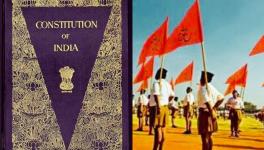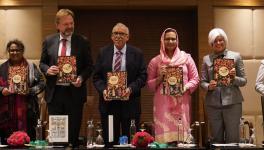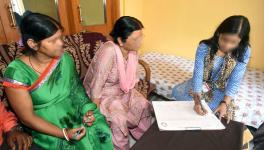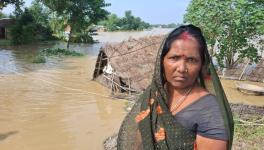Bathani Tola Killings: Victims Allege ‘Subversion of Justice’ in 15 Years of Nitish Kumar
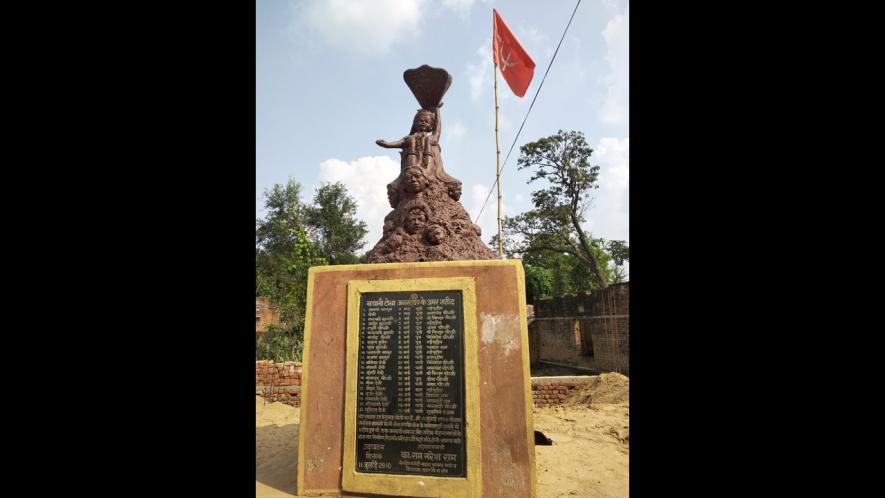
Bathani Tola memorial
“Maine Bihar ke logon ko narsanghar k daur se nikala hai” (I have rescued the people of Bihar from the era of massacre)—these were the words of Bihar’s incumbent Chief Minister Nitish Kumar while addressing a public meeting on October 22 in Hasanpur (Samastipur). In poll bound Bihar, among the endless issue coming to the fore, the most subdued and ignored is the anguish of victims of caste-based carnage.
Nitish Kumar’s gospel of good governance i.e. ending the massacre era transformed into atrocities on dalit. According to 2016 data of the National Crime Records Bureau, Bihar had the highest number of crimes against SCs and STs. ‘Subversion of justice’ was carried out in the name of ‘susashan’ that bluffed victims of caste-based massacres, say people of Bathani Tola in Bhojpur’s Tarari, where the first major massacre of its kind took place.
In Tarari Assembly seat, which is going to polls on October 28, the scars of the 1996 massacre are still fresh in minds of many who pledge to vote against the incumbent government run by the Janata Dal- United (JD-U) and the Bharatiya Janata Party (BJP). The electoral fight here is also an ideological one i.e. Left vs Right where the Communist Party of India (Marxist-Lenninist) is confronting the BJP.
Twenty four years ago, Bathani Tola, 30 kms away from Arrah town in the Bhojpur region of central Bihar, had witnessed the worst degree of brutality in independent India with the brutal killing of 21 villagers by a private militia of upper-caste landlords. Bathani Tola is a settlement of landless Dalit and Muslim agricultural labourers on the outskirts of Barki Kharaon village in Bhojpur district. Barki Kharaon, turf of politically powerful Bhumihar and Rajput landlords who unleashed the communal massacre, is located just 150 meters from the site of the murderous rampage.
For decades, Bhojpur has been a mobilising ground under the leadership of the CPI(ML) against exploitative land relations. As awareness spread, the labourers started demanding their rights. The landlords couldn’t tolerate this. Once the labourers were empowered, they started an economic blockade. The landlords chose other ways to tackle the situation and most of the victims of the massacre were farm labourers.
The resistance by labourers posed a threat to the feudal landlords and in retaliation, Ranvir Sena was formed to wipe any opposition to feudalism.
The Ranvir Sena was founded by the dominant-caste Bhumihar landlords in Belaur village, Bhojpur district, in 1994 with the objective of protecting the crumbling edifice of feudalism from the fury of the movement by the poor peasants of Bhojpur. As per media reports, the local politicians used private armies like Ranvir Sena to intimidate voters during the 1995 assembly elections.
Memories of Massacre:
It was on July 11, 1996, at 12 pm when Ranvir Sena barged into Bathani Tola with guns, swords, and daggers and started killing whoever came in their way. The Dalit-Muslim rural hamlet had to bear the brunt of bloodbath for more than two hours. The 50-60 men strong and armed Ranvir Sena spared no one—a new-born baby, cringing in its mother’s lap, was butchered with a sword, and their hut set ablaze.
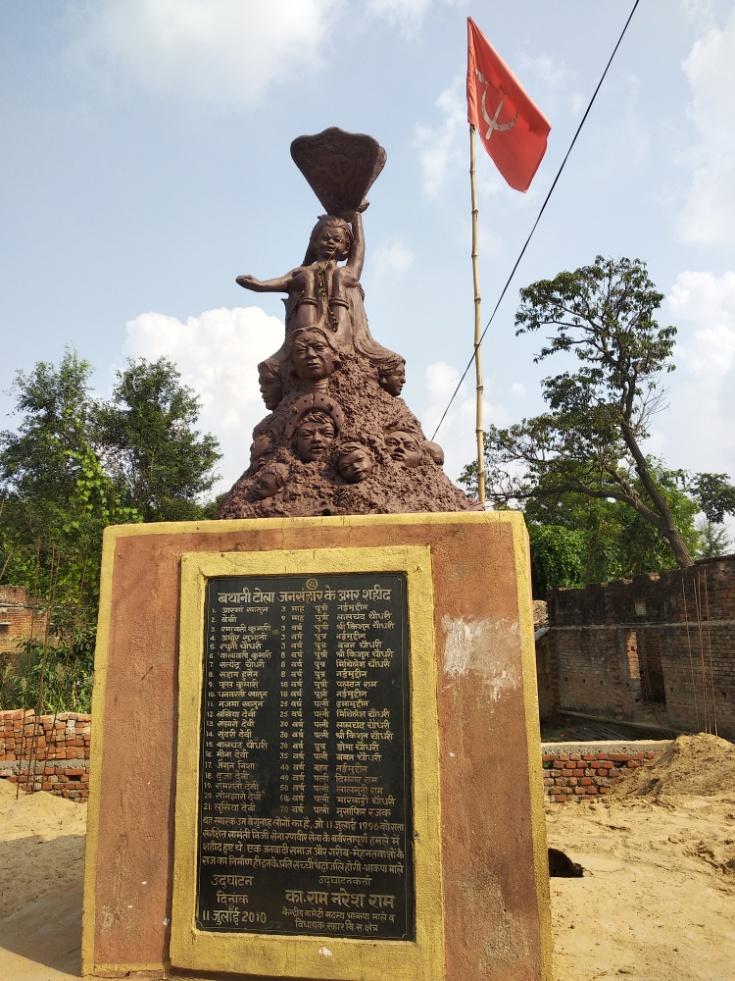
The memorial for victims of Bathani Tola massacre.
A memorial was erected in remembrance of the deceased of Bathani Tola. The memorial came up in the middle of the village lest the residents forget the “horror” their opponents inflicted on them; inscribed on it are the names and age of slain villagers comprising 12 women, 1 man, 6 children and 2 infants (3 and 9 months).
Giving more insight into the brutal violence, Jamuna Ram, an eyewitness, told NewsClick that on that tragic day, 18-year-old girls were gang-raped, breasts of a 25-year-old woman were chopped off before she was killed, a pregnant woman's womb was slit open with the foetus impaled on a sword and a nine-month-old child was chopped into two halves and tossed in the air.

Jamuna Ram, eye witness of Bathani Tola Massacre
Radhika (38) received bullet injuries in her breasts during the attack. Despite fatal injuries, she recorded her statement in Bhojpur local court as a survivor and eyewitness, and described the planned murderous atrocity led by the private militia. But it all went in vain when all 23 accused were acquited in 2012, said Ram.
Another survivor Kapil Sah briefed NewsClick about the dreadful event and said, “The landlords of Barki Kharao brutalised us because we resisted their oppressive dictats. Be it the encroachment of Imambada, Karbala land (the place of Muslim customary rights), graveyards or denial of daily wages, the landlords did not spare any chance of subverting our rights.”

Kapil Sah, Bathani Tola Massacre survivor.
“In midst of the violence, cries and pleas, we rushed for protection to four police pickets within a range of one kilometre, including one in the village itself, but no action was taken by cops to prevent the crime. The local police and landlord nexus took lives of innocents and the downtrodden,” Kapil Sah said. His claim sound similar to the views of the then Union Home Minster Indrajit Gupta who expressed dissatisfaction, accusing the police force of being “paralysed and impotent.”
Speaking on the upcoming elections, Sah said they got permanent homes (instead of makeshift huts), roads, electricity but not justice. Except upper castes i.e. Bhumihar and Rajput, “no one would vote for the ruling party as the wounds of the massacre have not healed,” he added.
Nitish Kumar Vs Justice:
The mid 90s saw a spree of caste-based violence with frenzied attacks on backward castes and Muslims over issues of land, landless labourers, wages and social dignity. The places that witnessed such violence include Bathani Tola, Laxmanpur Bathe, Shankarbigha, and Ekbari, etc.
In 2005, Nitish Kumar rode into power along with its ally the Bhartiya Janata Party (BJP). One of the first steps the Nitish Kumar government took was to disband the Amir Das Commission. Justice Amir Das, who headed the commission set up by the Rabri Devi government to investigate the role of the Ranvir Sena in these massacres, revealed in an interview to the Tehelka, “Within 15-20 days after the (Nitish Kumar) government was formed, I was pressured to submit the report in haste. The report could have affected many people and obviously, some people from the government were also involved.”
In May 2010, the district court in Arah convicted 23 people for the massacre in Bathani Tola, awarding death penalty to three and life sentence to the rest. This was followed by Nitish’s bigger majority win in November 2010 as self styled messiah of the extremely backward castes, the oppressed and marginalized.
Two years later in April 16, 2012, all the 23 convicts were acquitted by the Patna High Court leaving everybody to wonder who killed the hapless 21 in Bathani Tola. With “no conviction” in a daylight massacre, curtains went up on Nitish Kumar’s double talk on development along with justice.
He ordered a CBI enquiry after the murder of Ranvir Sena chief Brahmeshwar Singh alias Brahmeshwar Mukhiya but kept mum and remained unmoved to carry on enquiries of the Amir Das Commission or challenging the acquittal of the 23 accused in the Bathani Tola massacre.
Politburo member of the CPI (ML), Kavita Krishnan while reacting to Nitish Kumar’s claim on ending the massacre era, told NewsClick, “CM Nitish did not end the era of massacre instead he ended the investigations of Amir Das Commission that could have disclosed big names of the newly formed Bihar government”.
Get the latest reports & analysis with people's perspective on Protests, movements & deep analytical videos, discussions of the current affairs in your Telegram app. Subscribe to NewsClick's Telegram channel & get Real-Time updates on stories, as they get published on our website.










